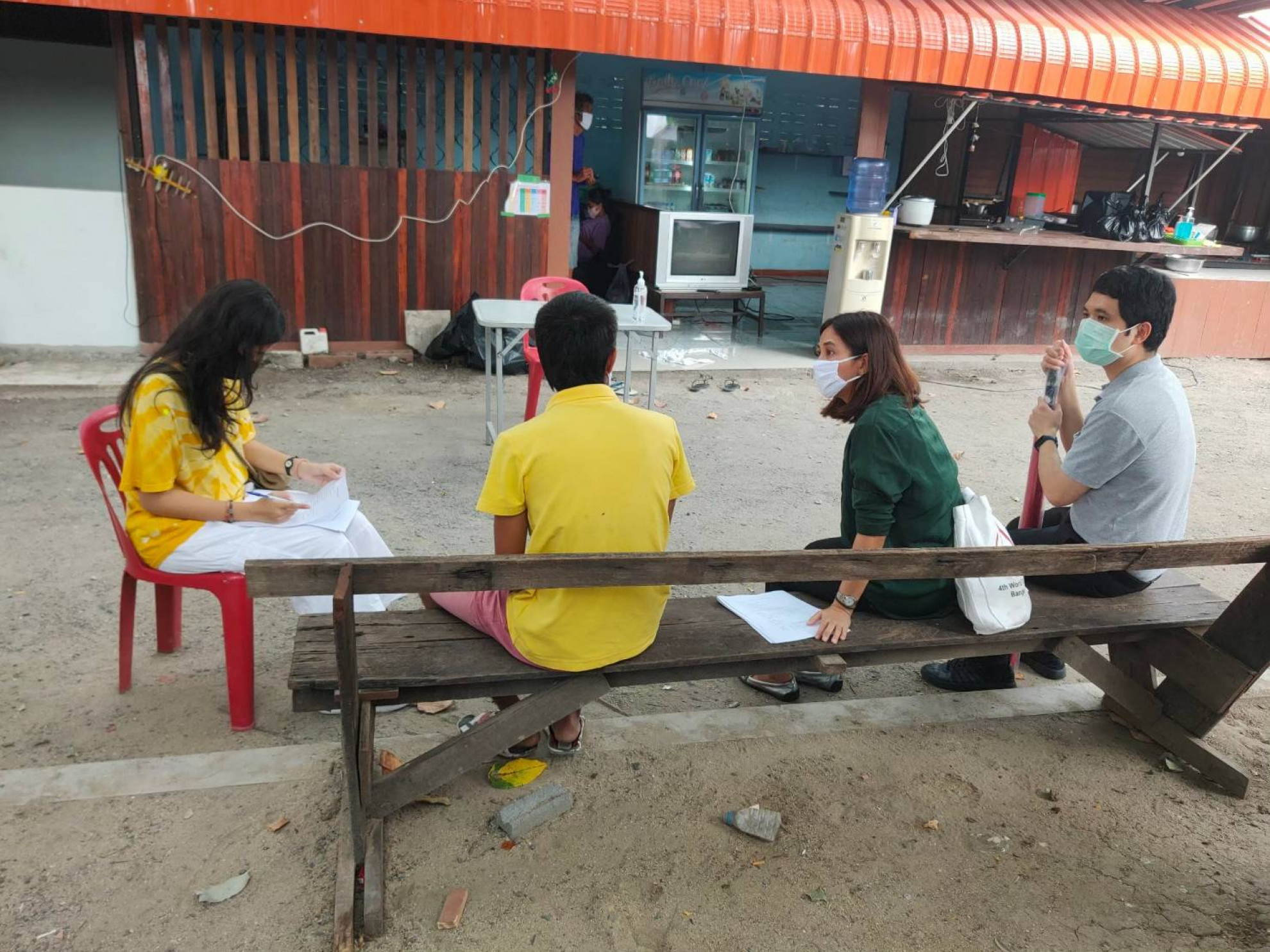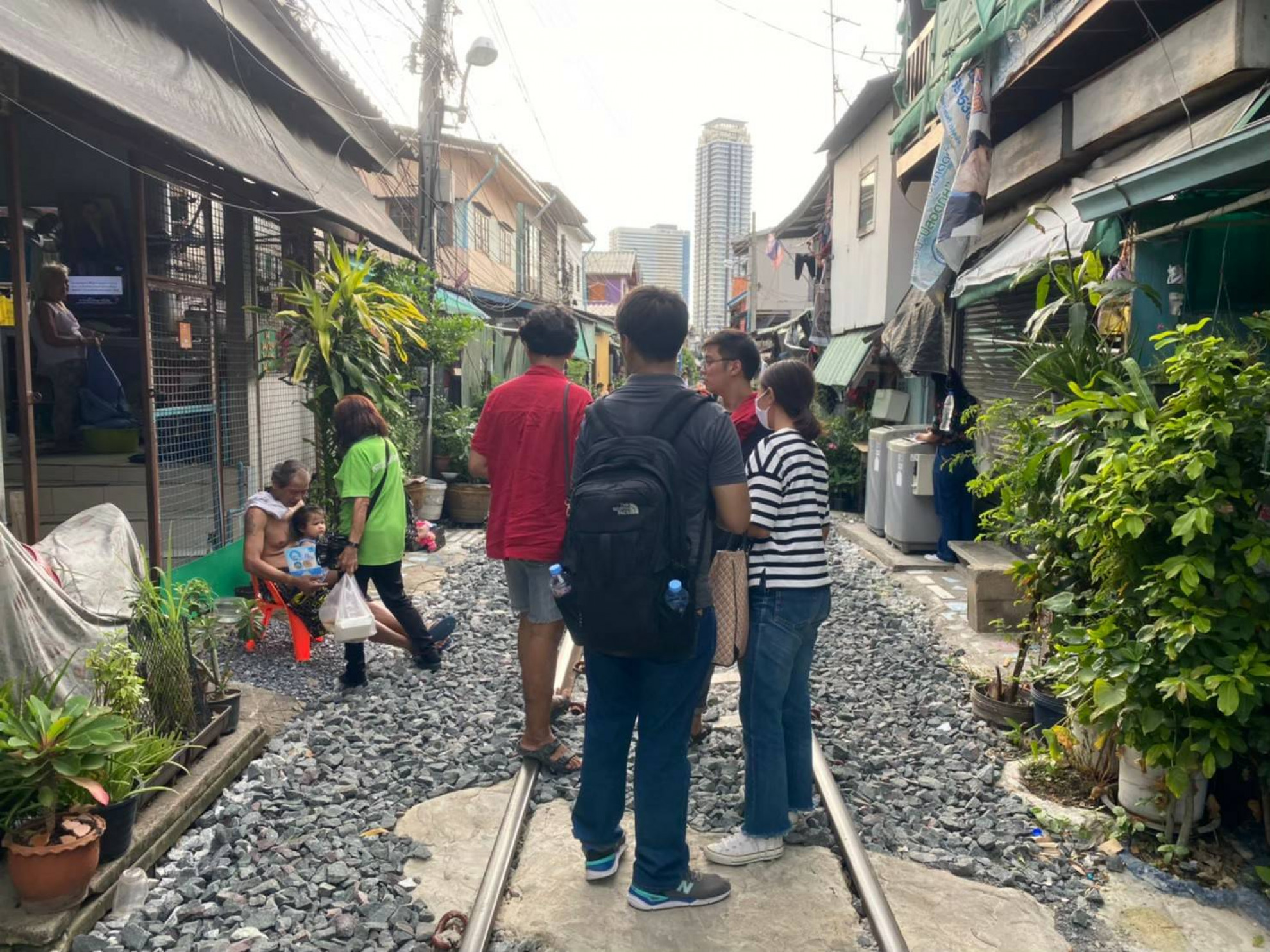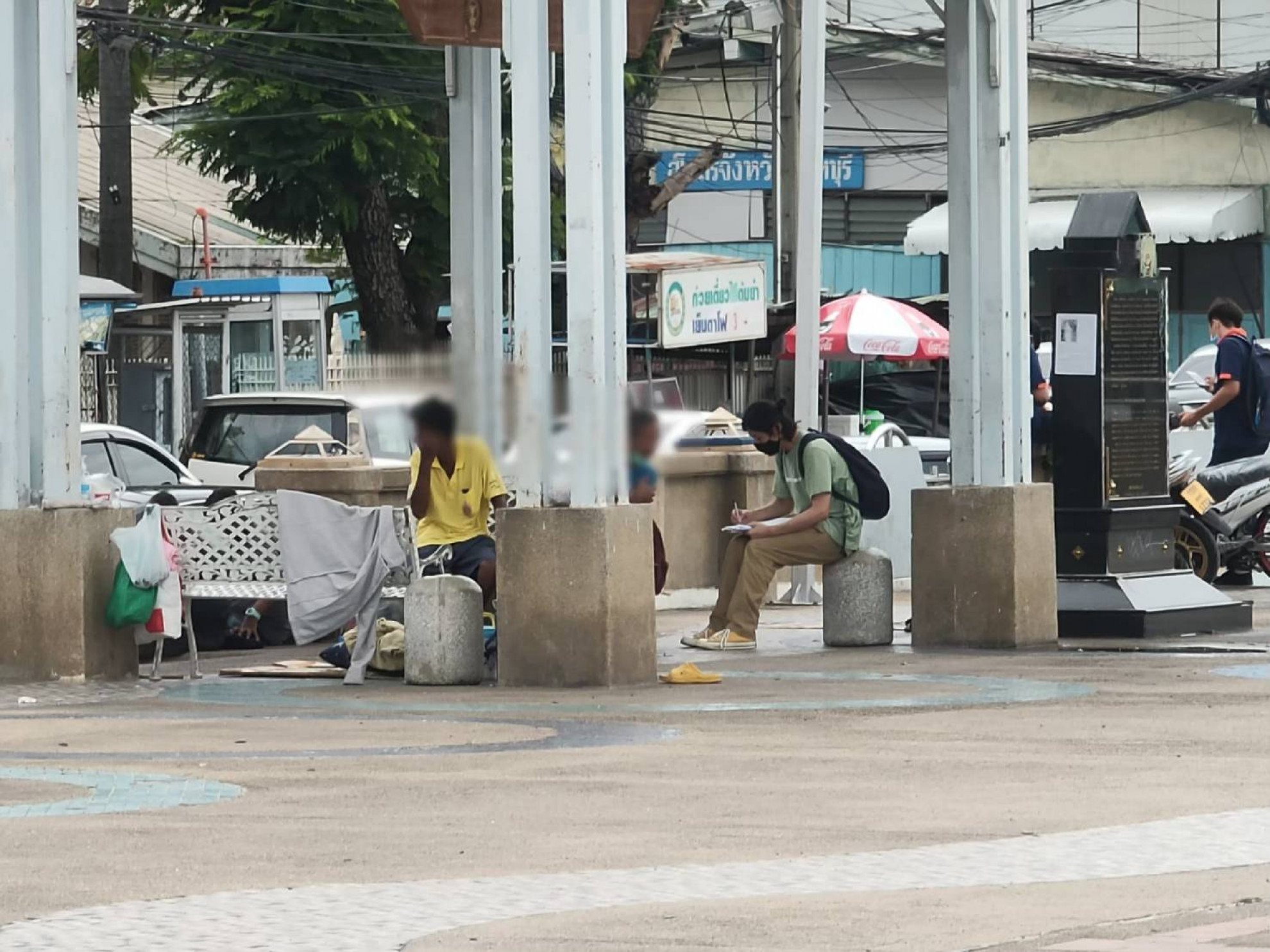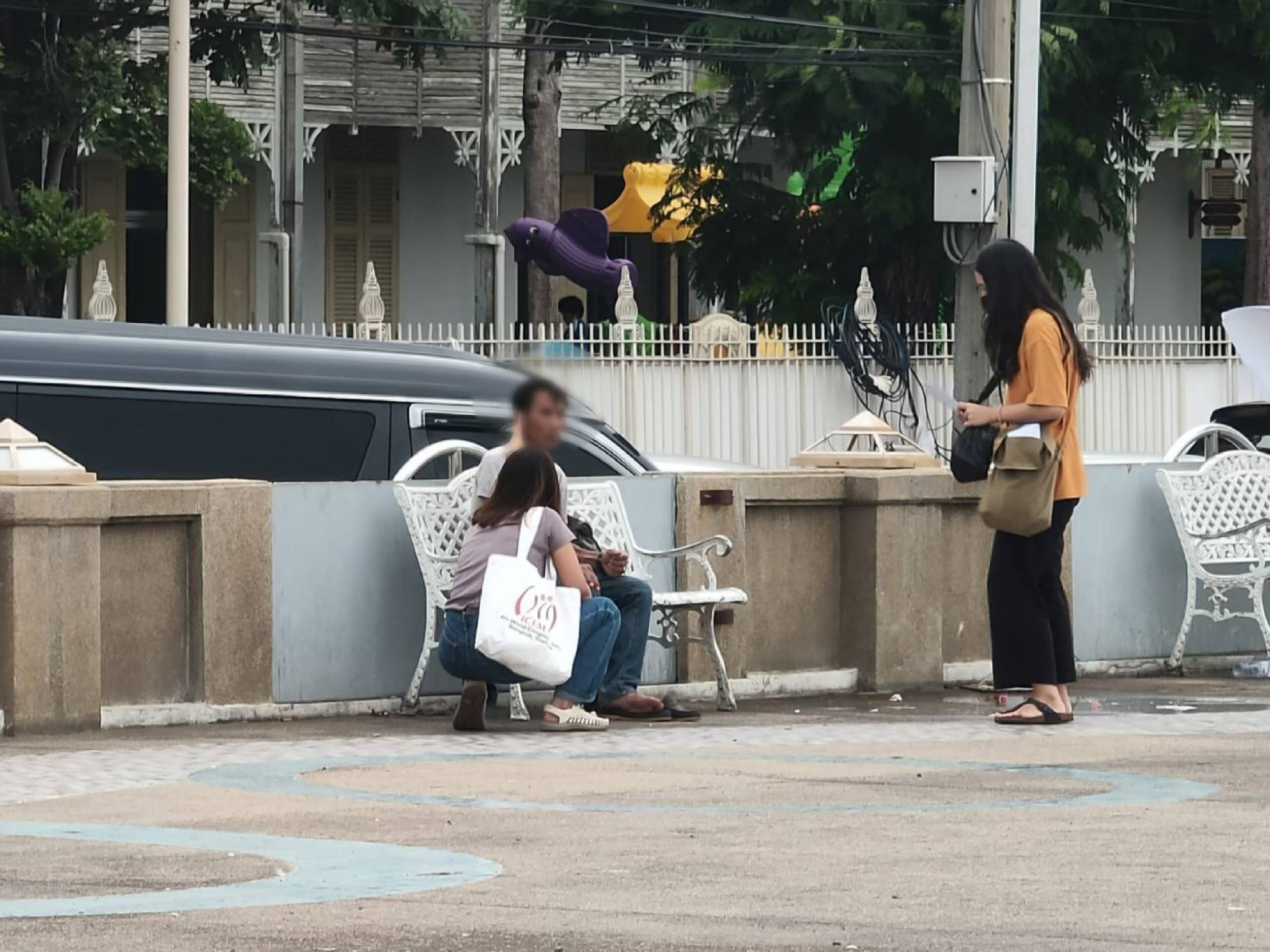





| Target | Indicator | Result |
|---|---|---|

SDG 1
NO POVERTY
|
||

SDG 2
ZERO HUNGER
|
||

SDG 3
GOOD HEALTH AND WELL-BEING
|
||

SDG 8
DECENT WORK AND ECONOMIC GROWTH
|
||

SDG 11
SUSTAINABLE CITIES AND COMMUNITIES
|
||
This research project has 2 main objectives which are (1) to develop the homeless early warning indicators, and (2) to develop the returning homeless back to society model for the case of Thailand. Regarding the first objective, we use maximum likelihood estimation under the conditions of asymmetric two databases to generate homeless probability model. Since there is no homeless registration system in Thailand, this paper has to use two different sources of data in order to estimate homelessness probability. We designed an econometric binary choices model in which one group is a group of vulnerable non-homeless people, while another is a group of homeless people. The objectives of our model are to find the homeless probabilities of all possible related factors, and to estimate homeless probabilities in both micro and macro level. This paper finds that gender, age, income, handicapped status, alcohol consumption, rights to medical treatment, and right to elderly or handicapped allowance were significant factors affecting individual chance to be homelessness. In addition, the marginal effects estimated from the model enable us to interpret as the homeless early warning indicator, predict individual probability to be homelessness, as well as forecast number of homeless people under different simulated circumstances. Therefore, this model can be applied to use as a homeless prevention policy in Thailand.
Additionally, besides the development of homeless prevention policy, we still have the second objective which is to develop the returning homeless back to society model for the case of Thailand. This model is generated under the focus group among homeless related researchers, academicians, government officers, policy makers, and NGOs officers. With hope that these 2 models could be further developed as another homeless policy in Thailand.
โครงการวิจัยนี้มีวัตถุประสงค์หลัก 2 ประการ คือ (1) เพื่อพัฒนาตัวชี้วัดความเปราะบางในการเข้าสู่ภาวะไร้บ้าน และ (2) เพื่อพัฒนาตัวชี้วัดความพร้อมในการตั้งหลักชีวิตเพื่อกลับคืนสู่สังคมของคนไร้บ้าน สำหรับกรณีของประเทศไทย สำหรับวัตถุประสงค์ที่หนึ่ง เนื่องจากในประเทศไทยไม่มีระบบการลงทะเบียนคนไร้บ้านจึงทำให้งานวิจัยฉบับนี้จึงต้องใช้แหล่งข้อมูลที่แตกต่างกันสองแหล่ง ได้แก่ กลุ่มคนไร้บ้าน และกลุ่มคนเปราะบางซึ่งมีความเสี่ยงจะกลายเป็นคนไร้บ้าน เพื่อประมาณการณ์ความน่าจะเป็นในการเข้าสู่ภาวะไร้บ้าน ผู้วิจัยได้ออกแบบแบบจำลองทางเศรษฐมิติเพื่อประมาณการความน่าจะเป็นของการเข้าสู่ภาวะไร้บ้านทั้งในระดับจุลภาคและระดับมหภาค ผลการศึกษา พบว่า เพศ อายุ รายได้ สภาวะพิการ พฤติกรรมมการดื่มแอลกอฮอล์ สิทธิในการรักษาพยาบาล และ สิทธิเบี้ยยังชีพผู้สูงอายุหรือคนพิการ เป็นปัจจัยที่มีนัยสำคัญต่อโอกาสในการเป็นคนไร้บ้าน นอกจากนี้ ในตัวแบบจำลองยังสามารถประมาณการความเสี่ยงในการเข้าสู่ภาวะผู้ไร้บ้านรายคน และคาดการณ์จำนวนคนไร้บ้านในกรุงเทพมหานคร ภายใต้สถานการณ์จำลองที่แตกต่างกัน ดังนั้นจึงสามารถนำแบบจำลองนี้ไปประยุกต์ใช้เป็นนโยบายป้องกันคนไร้บ้านในประเทศไทยได้เพื่อเป็นเครื่องมือการเตือนทางสังคม
นอกจากนี้นอกจากการพัฒนานโยบายการป้องกันคนไร้บ้านแล้ว โครงการวิจัยนี้ยังมีวัตถุประสงค์ประการที่สอง คือ การพัฒนาแบบจำลองการกลับสู่สังคมของคนไร้บ้าน กรณีของประเทศไทย แบบจำลองนี้ถูกออกแบบขึ้นจาการประชุมสนทนากลุ่มระหว่าง นักวิจัย นักวิชาการ เจ้าหน้าที่ของรัฐ ผู้กำหนดนโยบาย และเจ้าหน้าที่องค์กรพัฒนาเอกชน ที่เกี่ยวข้องกับคนไร้บ้าน ซึ่งงานวิจัยฉบับนี้มีความมุ่งหวังว่าทั้ง 2 แบบจำลองที่ได้พัฒนามาจาก 2 วัตถุประสงค์นี้จะสามารถพัฒนาต่อไปเป็นอีกนโยบายหนึ่งของคนไร้บ้านในประเทศไทย
• Regarding the first objective, the Homeless Probability Model was used to forecast the number of homeless people under the Covid-19 situation and it estimated that under this circumstance the number of homeless in Bangkok would increase around 30%. This estimation result was published in many Thai medias such as newspaper, television news reporter, and social medias, which leaded the Office of the National Economic and Social Development Council of Thailand invited the researcher to consult about the homeless preventive policy under the Covid-19 situation in the Meeting to discuss ways to provide relief and compensation to people affected by the coronavirus 2019.
• Regarding the second objective, the returning homeless back to society model is currently used at the Rehabilitation and Development Center for the Homeless in Pathum Thani in order to test for their physical health, mental health, working skills, and other abilities with the objective of returning homeless back to society.
• จากวัตถุประสงค์ประการแรก แบบจำลองโอกาสในการเข้าสู่ภาวะไร้บ้านได้ถูกใช้เพื่อคาดการณ์จำนวนคนไร้บ้านภายใต้สถานการณ์โควิด-19 โดยได้พยากรณ์ว่า ภายใต้สถานการณ์การระบาดของเชื้อไวรัสโคโรนาในประเทศไทยนี้จะส่งผลให้จำนวนคนไร้บ้านในกรุงเทพฯ เพิ่มขึ้นประมาณ 30% โดยผลการศึกษานี้ได้รับการตีพิมพ์ในสื่อไทยหลายฉบับ เช่น หนังสือพิมพ์ รายงานข่าวทางโทรทัศน์ และสื่อโซเชียล ซึ่งทาง สำนักงานสภาพัฒนาการเศรษฐกิจและสังคมแห่งชาติ ได้ตระหนักทราบถึงปัญหาดังกล่าวจึงได้เชิญผู้วิจัยมาปรึกษาเกี่ยวกับนโยบายป้องกันคนไร้บ้านภายใต้สถานการณ์ Covid-19 ในการประชุมหารือแนวทางการช่วยเหลือ เยียวยา และชดเชยให้กับประชาชนซึ่งได้รับผลกระทบจากไวรัสโคโรนา 2019
• ตามวัตถุประสงค์ประการที่ 2 ปัจจุบันแบบจำลองการการกลับสู่สังคมของคนไร้บ้านถูกนำไปใช้ที่ศูนย์ฟื้นฟูและพัฒนาคนไร้บ้าน จังหวัดปทุมธานี เพื่อทดสอบสุขภาพร่างกาย สุขภาพจิต ทักษะการทำงานและความสามารถอื่น ๆ โดยมีวัตถุประสงค์เพื่อ ตั้งหลักคนไร้บ้านกลับเพื่อเตรียมกลับคืนสู่สังคม



